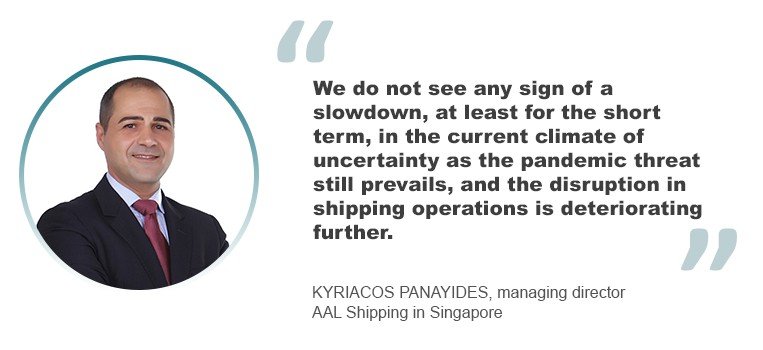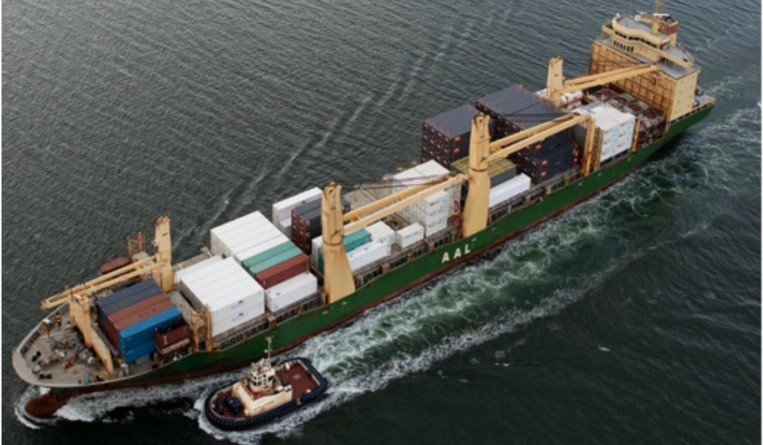The current supply chain chaos driven by tight capacity and mounting demand are forcing shippers and their forwarders to resort to transporting freight that is rarely shipped via breakbulk using multipurpose and heavy-lift vessels.
AAL Shipping said it saw a “mix of both severe challenges and unprecedented growth drivers” in the first half of the year – and expects “no slowdown” in the second half of the year as the pandemic continues to disrupt shipping.
“2021 has been a unique time for the multipurpose shipping market and indeed the wider shipping industry with the exception of tankers and passenger vessels,” Kyriacos Panayides, managing director of AAL Shipping in Singapore, told Asia Cargo News noting the mix of challenges and opportunities currently facing the industry.
“On the operations front, a global pandemic decimated cargo flows, sailing schedules and caused significant port congestion and productivity squeezes, while on the commercial front, we had an unpredicted high demand from the container shippers switching to the breakbulk shipping mode. Both led to record-high freight rates,” he said.
“We do not see any sign of a slowdown, at least for the short term, in the current climate of uncertainty as the pandemic threat still prevails, and the disruption in shipping operations is deteriorating further.”
Currently, the AAL executive noted that the disruption to shipping, caused by the Covid-19 pandemic is still a “major issue” for post fixture operations and creating long extended queues of congested tonnage at ports around the world.
“This situation is seriously impacting the normal operations of all sailings and schedule reliability is unfortunately beyond the control of carriers. This was initially more evident in Chinese and North Asian ports but has now become more widespread – across Europe, Oceania and the Americas,” he added.
Growth in renewable energy cargo
Despite the turmoil in shipping, however, the AAL executive noted there has been no “significant change” in the project cargo sector – other than a “healthy growth on wind energy [and] diversifying more to off-shore projects and adapting to newer technology with far bigger and heavier components for ocean transportation.”
“In terms of cargo projections, renewable energy cargo is predicted to show a continued healthy growth for a long while yet, as humanity looks to fulfil its commitments and green energy targets for national grids,” Panayides said, adding that this “has and will continue to be an important sector for AAL.”
“Moreover, oil & gas has already expressed an appetite for significant capex to be thrown into the industry targeting refurbishment of old technologies and structured components of distilleries as well as new site projects,” he added, noting that aside from these, AAL also expects to see “major infrastructure spending” by many nations to boost their economies post pandemic.
Shippers moving to multipurpose vessels
As container rates and associated supply chain chaos persist, shippers are also moving boxes and unboxed cargo on break bulk ships.
This is also true for AAL Shipping, which said from being a traditional specialist long-haul multipurpose and project carrier – targeting project heavy lift cargo and predominantly wind energy projects – it has shifted some of its operations to transporting container cargoes.
“We have quickly adapted to current market demands and moved part of our focus and trade lane operations into servicing in addition to the back-logged container market,” Panayides told Asia Cargo News.
Shippers willing to pay high rates to move boxes and newly unboxed cargo on break bulk ships are also driving up project cargo rates.
“Due to the lack of available space, container shippers have turned to MPP carriers – especially those with large tonnage vessels – and are offering attractive rates to accommodate their cargoes,” Panayides said.
“Of course, this market is not being set by the multipurpose carriers. Rather, we are absorbing the overflow that the container lines cannot process,” he added, noting that for AAL they were able to manage and accommodate these requests through “very careful stowage and voyage planning” without any disruption to their existing customer and trade lane needs.
Rates could further rise
“For as long as the price of shipping in containers remains unsustainably high and risks rising even further, we will continue to see mass conversion to a breakbulk mode of transport, thus freight rates might continue to rise or at least stabilize to current levels,” he said. “Market correction is obviously expected but might take some time for this to happen.”
AAL expects that in the short term, the shipping industry will continue to deal with the ongoing challenges brought by Covid-19.
Panayides said volatility in the market will also remain a challenge and especially when the lack of adequate tonnage to meet demand is encouraging ship owners to seek inflated rates and long-term commitments that will cause major issues for carriers when the market turns – as he noted that this “could happen sooner than we think.”
“On the cargo demand side, it is evident that shippers are showing desperation in an effort to secure onboard space for their cargoes and are willing to pay any price – and this goes for all cargo types, not just containers,” he said.
“This will last until there is a change in the demand/supply balance – although there is no indication of that happening just yet,” Panayides added.

Charlee C. Delavin



